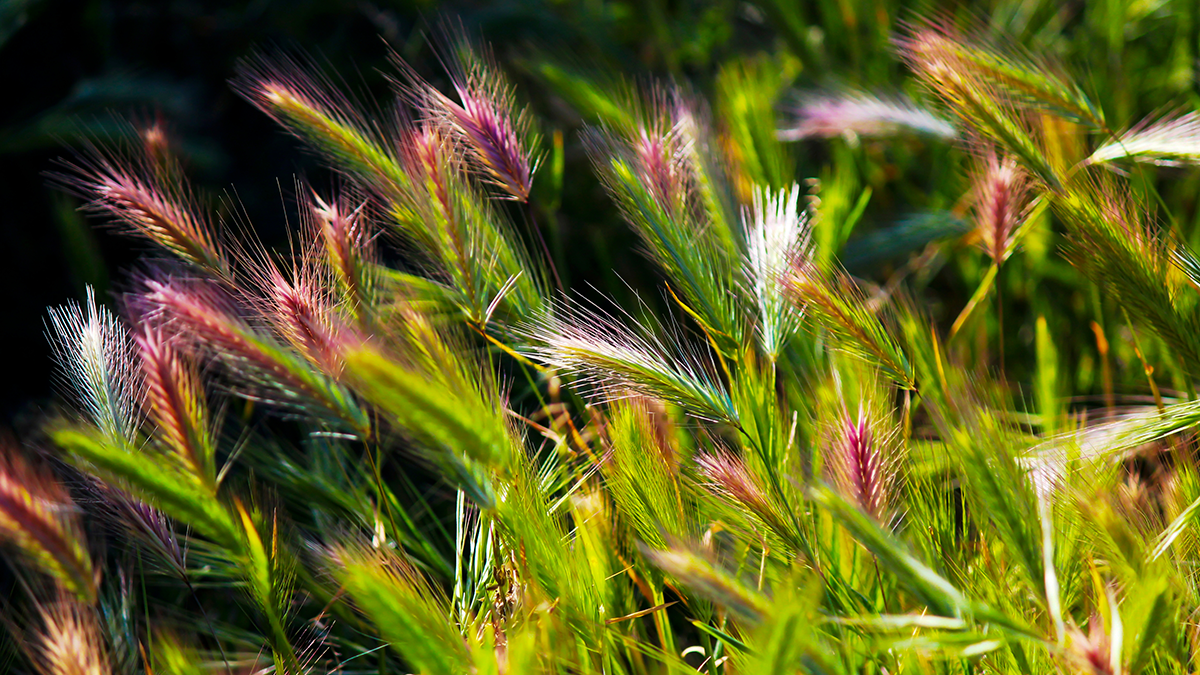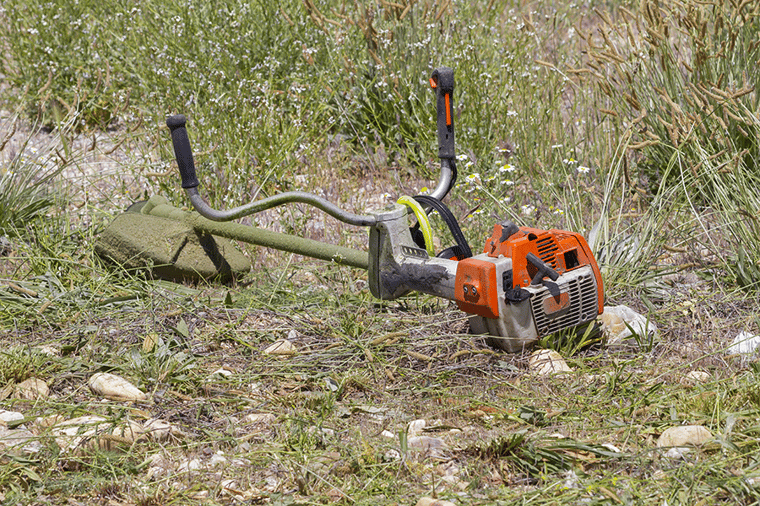Weed control in revegetation: Competition isn't always healthy

From an Olympic event to the AFL grand final to tendering for a business project, competition is a part of life. It drives success, highlights failure, and separates the weak from the strong. But competition isn't always on an equal footing. You wouldn't enter a baby into a 100-metre sprint, neither would a grade 3 student withstand as CEO of a national company.
It's no different with weed control in a revegetation context. You are planting young, tender seedlings into an environment with established, strong and mature weeds. Who is going to win this competition? Without external intervention, the weeds will compete for nutrients, water and light that would otherwise be available to the plantings. It's essential to remove this competition to ensure the seedlings' survival.
Effective weed control is one of the make-or-break factors for a successful revegetation project
In a previous blog post, we considered weed control in an assisted natural regeneration context. Weed control in a reconstructive revegetation project is often different to that implemented in regeneration projects. Reconstruction sites are usually much more degraded, with a higher weed presence and lower native vegetation presence. Therefore, low volume control methods like those used in regeneration projects are not cost or time-effective enough to use for revegetation preparation.
 Image: Brush-cutting weeds on a site.
Image: Brush-cutting weeds on a site.
The primary purpose of revegetation weed control is to reduce the weed presence enough to allow the new seedlings sufficient nutrients, water and light to survive and thrive; and eliminate any species of weeds that may pose a threat to the ongoing survival of the planted species.
Consider the following principles when deciding on an appropriate weed control strategy:
- Identify the weeds present and their threat levels to the revegetation.
- Identify which control method would be best for which weed species, including the timing of control.
- Implement this control plan.
- Continue weed control activities post-planting until the revegetation can adequately compete against the weeds.
Weeds that pose a threat to revegetation may be broadly grouped into two categories:
-
Short-term threat:
Weeds that provide a short-term threat to the initial survival of young seedlings but will provide minimal threat to mature plants (such as annual grasses like Wild Oats). As the revegetation matures it will often suppress these weeds, so the initial management can include treatments that have a short-term effect, such as spot spraying around planting locations, weed mats, cultivation, slashing, grazing and mulches. -
Ongoing threat:
Weeds that represent an ongoing threat to the survival or health of the revegetation when it matures (such as woody weeds like Olive or Blackberry, or perennial weeds such as Phalaris). These weeds will likely need a long-term control approach with consideration paid to seeding cycles and future germinations from existing seed-banks. Control measures – of woody weeds in particular – may include manual removal, drill and fill, burning or spraying and may even need to be started two years before planting or seeding.
If identifying weeds isn't your strong point, contact a local weed control contractor, your local Landcare group or your local council's natural resource officer.
Several online resources cover weeds Australia-wide, such as Weeds Australia, which includes an Australia-wide App developed to support this initiative (Google Play download). Several states have also put together Apps for identifying local weeds, with many including information about control options. You can reference these State-specific apps below:
Weed control methods
Weed control methods can be broadly categorised into chemical, mechanical, manual and biological methods. The table below provides a brief outline of some of the advantages and disadvantages of most of these methods.
| Weed Control Method | Advantages | Disadvantages |
| Chemical (spot spraying, boom spraying, drill and fill, basal bark) |
A chemical option is available for almost all weeds. Cost effective over large areas. When timed correctly, the dead weeds can provide a short-term mulch for the revegetation. |
Environment risk if not applied correctly. Not an option for certified organic properties. Can result in damage to revegetation post-planting if residual herbicides are used. |
| Mechanical (slashing/brush-cutting) |
Good for reducing biomass of weeds. Stimulates fresh growth allowing better chemical control. Can stop weed seed set if timing is correct Reduces fire risk. |
Does not actually kill the weeds therefore does not reduce water, nutrient and light competition to the revegetation. Requires a site suitable for slashing equipment. |
| Mechanical (scalping) |
Removes the top layer of the soil including weed seeds. Can lower available nutrients from topsoil as a benefit for native grass seeding. |
Can lower available nutrients from topsoil and hinder growth in species requiring more nutrition. Can increase erosion potential due to exposed soil. |
| Mechanical (cultivation/soil preparation) |
Stimulates germination of seed-bank in the soil allowing follow-up control and subsequent reduction of seed-bank. Cost effective over large areas. Reduces chemical use. Breaks up soil making planting processes easier. |
May create an erosion risk. Requires a site suitable for cultivation equipment. |
| Manual (burning) |
Stimulates germination of seed-bank in the soil allowing follow-up control and subsequent reduction of seed-bank. Cost effective over large areas Good for reducing biomass of weeds. |
Pre-planting control method only. Does not kill all weed species. Safety risk if done incorrectly. |
| Manual (grazing) |
Good for reducing biomass of grassy weeds. Stimulates fresh growth allowing better chemical control. Can stop weed seed set if timing is correct. Reduces fire risk. |
Stock will not graze all weed species. Can damage site if overstocked. Does not actually kill the weeds therefore does not reduce water, nutrient and light competition to the revegetation. |
| Manual (weed matting) |
Suppresses weed growth. Stabilises slopes and creek banks. Reduces evaporation meaning more water present for the revegetation. Can reduce follow-up weed control requirements. |
Higher cost for initial purchase and installation. Does not kill all weed species. Requires another pre-planting weed control method to be used before installation. |
| Manual (mulching) |
Reduces evaporation meaning more water present for the revegetation. Can reduce follow-up weed control requirements. Can provide nutrients for revegetation when mulch breaks down. |
Higher cost for purchase and application. Can compete with revegetation for Particular mulches can be a fire risk. Can cause disease such as stem rot if applied incorrectly. |
Video: Dabber Herbicide Applicator used in cut and swab herbicide applications, ideal for poisoning Blackberry, Gorse and many other weeds.
Remember, there is no 'one-size-fits-all' when it comes to weed control. Take into account ALL of the weed issues present and the proposed planting methods and decide on a comprehensive management strategy that can continue past the actual planting of the site.
Next steps
We will examine the different planting methodologies in our next blog post.
If you have any questions relating to the weed control stage of your revegetation project, feel free to reach out to our team. Please email us at info@arborgreen.com.au.
If you've recently completed a noteworthy tree planting or bush revegetation project and you would like to feature your planting project, follow this link to fill in your project details.
Access the full Revegetation blog series.
/Arborgreen%20-%20DGreen%20-%20RGB%20-%20Sml.png?width=1045&height=347&name=Arborgreen%20-%20DGreen%20-%20RGB%20-%20Sml.png)

